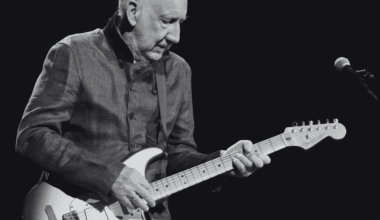The demands of a touring life are rarely kind to anyone who dedicates themselves to music. Performing night after night in front of massive audiences might seem thrilling, but living out of a suitcase, bouncing between hotels, and trying to bring the same energy each show can quickly wear down even the most committed performers. This pressure was no stranger to Fleetwood Mac, who—despite their nearly mythical resilience—faced moments that Christine McVie recalled as nearly lethal for them all.
Fleetwood Mac had already shown they could survive anything. They endured lineup changes that would have split up most groups, yet each time they lost members like Peter Green or Bob Welch, they somehow found a way to rise again.
However, when Lindsey Buckingham and Stevie Nicks joined, they added more than just musical talent; they brought an intensity and emotional baggage that hit its peak during the making of Rumours. That album chronicled their breakup, alongside the unraveling of Christine’s own marriage to John McVie.
The result was a record soaked in tension and passive aggression, creating an emotional strain that continued on the road, where avoiding drama was nearly impossible.
After Rumours, they attempted to regroup, but the creative process for Tusk was just as grueling. Each band member came ready to make bold musical statements, but the ideas often felt disjointed, as if they belonged on three separate albums. Buckingham, determined to push boundaries, dove into experimental territory that frustrated his bandmates.
The intensity reached a point where the band sarcastically thanked him on the album’s inner sleeve—a nod to the relentless demands his perfectionism placed on the group.
Reflecting on that period, Christine McVie recalled the immense toll it took: “I remember we did two huge world tours after Tusk. We drove ourselves into the ground physically, and obviously, there was a lot of drinking and a lot of drugs, and that just about killed us all, so we took a lot of time off. There was a long time between Tusk and Mirage.”
The break allowed them to recover somewhat and helped the band evolve musically. Stevie Nicks, especially, had blossomed into a solo powerhouse, and her contributions to Mirage, like “Gypsy,” showcased her as a creative equal to Buckingham. Meanwhile, Buckingham’s tracks, though restrained compared to Tusk, still showed his rock roots.
The decision to take a step back ultimately saved the band from reaching a breaking point. After Tango in the Night, it was clear they wouldn’t last much longer as a cohesive unit, but the break had allowed them to release a few more iconic works.
Had they continued without pause, Fleetwood Mac may have burned out completely, depriving fans of those later records. Taking time apart ultimately preserved their legacy, proving that even legends sometimes need to hit pause to survive.






